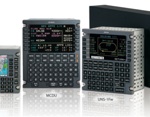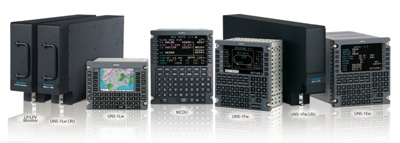
News
WAAS 101
 NEWS HIGHLIGHT
NEWS HIGHLIGHT
WAAS 101
One of the more popular acronyms in our industry today is WAAS - Wide Area Augmentation System.
March 6, 2009 By Carey Fredericks

|
March 6, 2009, Toronto – One of the more popular acronyms in our industry today is WAAS – Wide Area Augmentation System. This term relates to a space-based (GPS) augmentation system aid that has been developed to augment the accuracy of GPS in an aircraft and much more.
WAAS improves accuracy, integrity, and availability of the GPS signals. It provides corrected GPS signal data that reduces errors which may be caused by temperature, baro mis-set effects, ionospheric conditions, solar activity or atmospheric conditions. The accuracy of the GPS is improved from 100 meters to 7 meters according to FAA estimates. Accordingly, WAAS will enable aircraft to rely on their GPS for all phases of flight – including all RNAV (GNSS) non-precision approaches – to any airport within its coverage area.
WAAS can in fact provide near-to-CAT 1 non-precision approaches with an accuracy of 16 meters laterally and 4 meters vertically. That is ILS-like performance – without ground-based landing aids!
So with WAAS, users get ILS-like minimums, without the use of ground-based nav-aids. Another thing to note here is that the ILS infrastructure is expensive to maintain and not available at all airports. It is also subject to periodic outages. WAAS is available widely to all users whose aircraft are so equipped.
How does WAAS do this? It uses ground-based reference stations that measure small variations in the GPS satellites' signals. These measurements are sent to master stations, which in turn “queue” the received Deviation Correction (DC) and send the correction messages to geostationary WAAS satellites. This happens at least every 5 seconds or better, meaning that the information is accurate. The satellites broadcast the correction messages back to WAAS enabled airborne navigation receivers that make the corrections while computing their positions. In fact at the user end, the GPS signal notifies users within 6.2 seconds of corrections and errors.
The primary objective in establishing WAAS was to increase safety for aviation. By improving the accuracy, availability and integrity of GPS, WAAS increases the navigation capability for all classes of aircraft in all phases of flight.
Adding WAAS capability to your aircraft is not overwhelming but does require some planning and discussion. To that end, MC2 are teaming up with Universal Avionics to host a WAAS Information Open House on March 24th, 2009. The location for this will be the MC2 boardroom at YYZ. Please let us know if you would like to attend.
For more information or discussion on this or other issues, please contact either Barry Aylward or Bill Arsenault. You can reach them by email at barry@kitcheneraero.com and bill@midcanadamod.com.
Why select a WAAS system from Universal Avionics?
Universal Avionics have been in the advanced Flight Management Systems technology business for over 27 years. They were the first to obtain TSO and STC for Part 23 and Part 25 aircraft for WAAS FMS. Universal builds the only WAAS-capable Flight Management System today. They were also the first to receive TSO-C190 certification for a WAAS/SBAS antenna.
Universal offers a WAAS solution to fit every aircraft. Their LP/LPV (Localizer Performance with Vertical Guidance) Monitor is available for installations where space is limited. Use of LPV approaches is a key capability of WAAS FMS. The dual monitoring function is a requirement for LPV LOS approaches and the use of GPS altitude during LPV LOS approaches eliminates ADC temp-related errors.
Universal WAAS is focussed on safety – lower-minima WAAS-based approaches are fundamentally more stable, and replace the dive-and-drive approaches being flown today, and their inherent CFIT risk. It also provides ILS-like non-precision approach capability at airfields where there are higher minima or no approach at all. This in turn allows approaches to small out-of-the-way airfields at night when no local altimeter setting is available. A WAAS from Universal Avionics eliminates the requirement for pre-flight RAIM Prediction requirement and offers Primary Means of Navigation capability. It also offers the ability to flight plan the GPS Approaches as alternates as well as the destination. The system has been designed by pilots for pilots!
A bit about the Universal WAAS solution
The Universal Avionics FMS meets the most stringent safety regulations released to date, TSO-C146c and Class Gamma-3. The Universal FMS features an integrated SBAS/GPS receiver – which means no separate receiver is required. The SBAS-corrected position data is integrated with the FMS position calculation. This provides enhanced accuracy, even when flying LNAV-only approaches. These FMSs are PRNAV and AC 90-100 compliant and RNP-ready.
Universal have a full line of FMSs that are available to meet a variety of integration requirements. They come designed for the long-term by providing greater database memory to support future growth of WAAS-based approaches. Universal WAAS/SBAS-FMSs undergo stringent hardware testing and manufacturing processes that results in a more reliable product. They incorporate larger, highly integrated components which result in unit reliability.